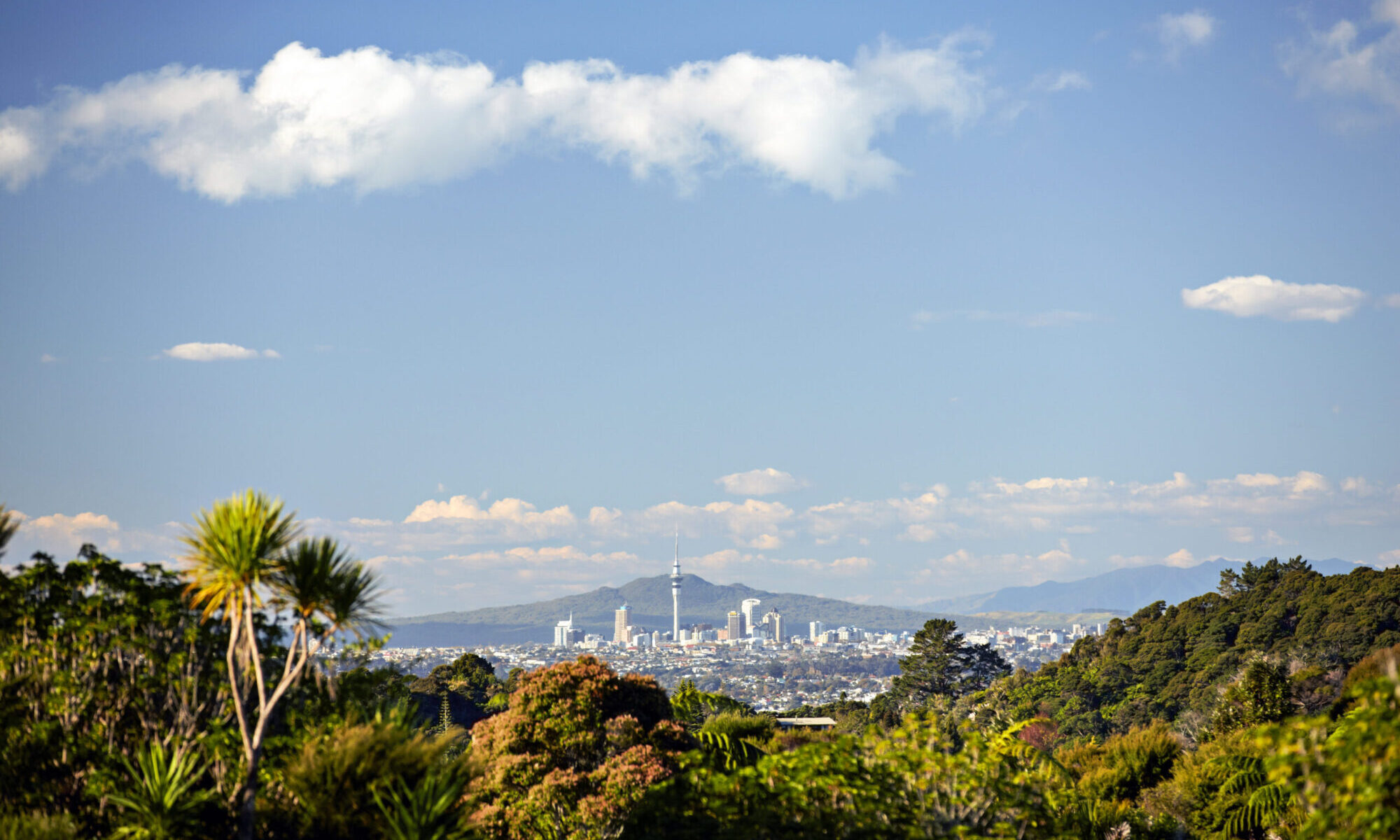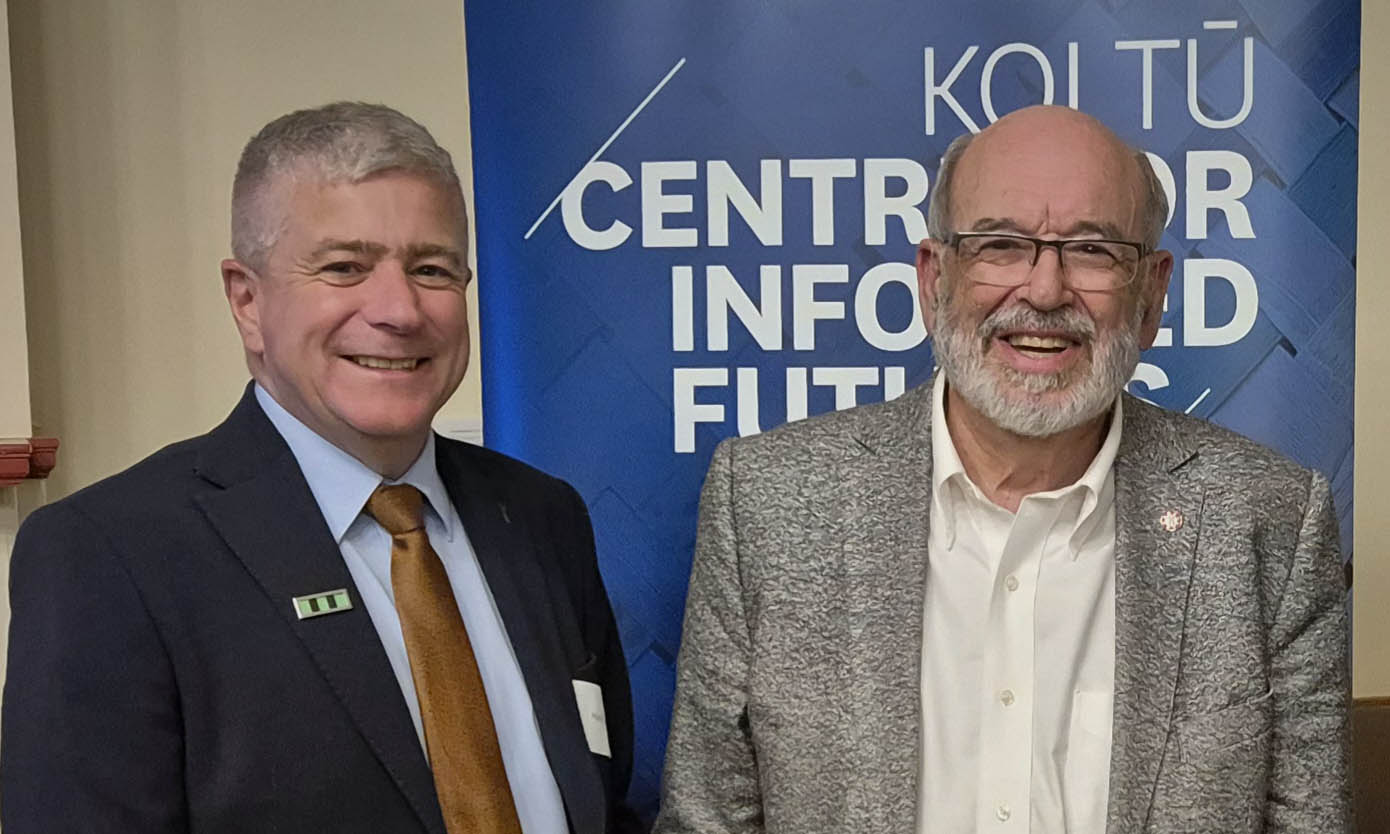Reimagining Tāmaki Makaurau Auckland – 12 months on

What could Auckland become within two generations? How do we become a truly global, liveable and sustainable city that is fit for the future?
One year ago, Koi Tū: The Centre for Informed Futures released Reimagining Tāmaki Makaurau Auckland: harnessing the region’s potential – a report commissioned by Tātaki Auckland Unlimited – which explored the changes needed for Auckland to reach its potential.
Koi Tū was asked to think ahead about Tāmaki Makaurau Auckland’s long-term future – to leap forward two generations – about 50 years – to suggest the kinds of evolution the region needs.
The independent report, based on extensive consultation and co-authored by Sir Peter Gluckman, Dr Anne Bardsley and Dr Dawnelle Clyne, was intended to stimulate open-minded conversation and debate.
Twelve months on we look at the progress made.
Context
Tāmaki Makaurau Auckland is Aotearoa New Zealand’s largest and most diverse city. It is the economic and financial capital of New Zealand, and the country’s main gateway for people and goods. Auckland has the largest Māori and one of the largest Polynesian populations in the world and will soon be a region of two million people – a remarkable asset for the entire country.
The time is right for well-informed, deep and wide discussions about Auckland’s future. With the Covid-19 pandemic fundamentally changing our perceptions of normality, we argued there was a need to explore new ways for central and local government to engage with each other and the public to enable better long-term outcomes. This includes telling the story of Auckland in a way that helps the public understand and contribute to achieving its full potential.
The report presents nine integrated visions of the future to provoke discussion about where the region is headed, and suggests how these could be enabled by better aligning local and central Government planning and strategy.
Specifically, we suggested establishing a singular planning unit for Auckland that draws on a common pool of data to enable more joined-up thinking and decision-making across government agencies. To ensure plans and decisions always consider system-wide implications and long-term consequences, a commission (or commissioner) for future generations could be set up to coordinate with this planning unit.
The nine scenarios together describe how Auckland might become a cohesive, sustainable and resilient city that celebrates its culture and heritage and protects its unique natural environment for the long-term wellbeing of its people. Among this, a popular idea was the suggestion that Auckland could become an indigenously-inspired ‘National Park City’. The momentum catalysed by this provocation is not something to be squandered.
Green shoots
Several initiatives are underway in response to this work:
- With a number of partners, including Ngāti Whātua Ōrākei, MOTAT, Auckland Zoo, and Tātaki Auckland Unlimited, Koi Tū is considering how to develop the Western Springs area as a thriving natural, cultural and educational precinct that would serve as a pilot/microcosm for the broader concept of an indigenously-inspired National Park City.
- Recognising that Auckland is NZ’s primary international city, an effort is now underway, led by the Committee for Auckland, to benchmark the city against international peers, so that we can better understand its strengths and weaknesses to support future decision-making and investment.
- An initiative led by Beca and a coalition of partners across the public and university sectors (including Koi Tū) and Ngāti Whātua Ōrākei has begun to explore the development of a digital twin for central Auckland, with a public-facing, gamified interface to help visualise different scenarios in planning for the future.
- Local Government NZ, along with Koi Tū and a number of other groups, will host the former Welsh Commissioner for Future Generations in July, to gain insight into how we might go about establishing a similar function and instill better intergenerational thinking into our public decision-making.
And yet, short-termism still rules
The report raised fundamental issues of confused planning, responsibilities and accountability, and these remain at the heart of Auckland’s challenge. The structure of local democracy and its relationship to central government cannot be solved in a year, but neither can it be left on the shelf.
Despite some positive momentum in some domains, short-termism remains the status quo.
The recent extreme weather events have emphasised the continued short-term thinking in Auckland’s infrastructure planning and risk management. The flooding clearly demonstrated the problems of allowing in-fill housing that reduces permeable ground within the urban domain, while simultaneously failing to ensure that wastewater and stormwater infrastructure is adequate to cope with storm events.
The council’s budget priorities, some which have shifted in response to the flooding, are also very short-term focused. Cuts to programmes that contribute to community wellbeing, including education and youth centres may backfire in the long run. Lack of investment in the creative sector and innovation ecosystem means we risk losing critical talent and diminish Auckland’s international positioning.
The hole that Auckland is digging for itself continues to deepen as long as the issue of (lack of) local body funding remains unresolved. This is a huge issue because local bodies have constrained sources of funding, and the boundaries of responsibility and expectation between central and local government remain confused. Yet local bodies do much to determine the quality of life for the people who live in the city.
What will it take to move these things forward on a more strategic basis, taking systems-level implications and longer-term outcomes into account? Current trends in response to budget constraints and disasters may set things back rather than moving forward.
The nine scenarios featured in the report
- A socially cohesive region: A diverse and inclusive city that celebrates different peoples, cultures and religions.
- A region of creativity and culture: Creativity, culture and innovation pervade all communities.
- A region of quality education: A place where all residents can access quality education for life. The education system has creativity at its heart, producing innovative thinkers who can adapt and thrive in the face of continuous change.
- An innovative region: Auckland is the engine of New Zealand’s weightless economy.
- A sustainable and resilient region: A resilient city where future generations thrive, and people are connected to and take responsibility for the environment.
- A region of human-focused infrastructure, transport and housing: Future-focused innovation and infrastructure for better quality of life for all.
- A region of ‘integrated precincts’: A city of ‘places with purpose’. People feel connected to and proud of precinct communities, and their cultural and industrial character, which provide a wide range of opportunities to live, work and play.
- A connected region: Recognising and leveraging Auckland’s wider regional assets.
- An indigenously inspired ‘national park city’: An overarching, integrating scenario that enhances natural, human, cultural and social capital.
The enablers
- Auckland needs more consistent, aligned and integrated planning across multiple agencies both in Wellington and Auckland, and an agreed long-term view of Auckland’s future. Without agreement between key stakeholders on the desired destination, any road will do.
- A strong caucus of Auckland MPs working regularly with the Mayor is needed.
- Planning should occur within a framework of an overall aligned strategy looking out over generations, and structures should be created to ensure this.
- Auckland’s future will be greatly enhanced by the creation of a single, whole-of-Auckland planning and strategy unit with integrated data capacities.
- The relative role of central and local government merits reconsideration.
- Auckland should take a lead in incorporating participatory and deliberative democratic methodologies into its democratic processes.
- Auckland should establish mechanisms such as a Commission for Future Generations to emphasise its commitment to the future.


